www.GANCARZ.com
Travel Photos
Progresso
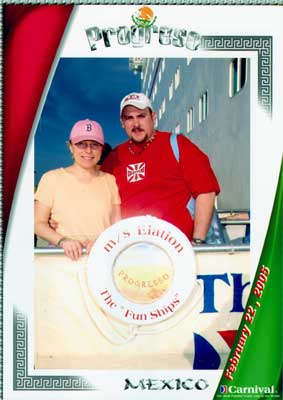
Here is our disembarking photo from the cruise ship. Sue thinks the look on my face is hysterical. They had us looking into the sun, and my eyes are all squinty. "Do you smell what the Rock is cooking?"
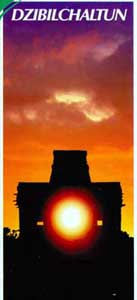
Here is a brochure from the Mayan ruins we visited in Progresso. Pronounced "tzee-BEEL-chahl-toon", it is Mayan for "place where there is writing on the stones."
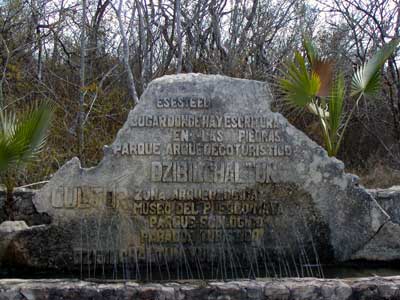
Dzibilchaltun was one of the largest Mayan cities (40,000 people), and 8,400 structures have been discovered on the site.

This is the Temple of the Seven Dolls.

The Temple door is aligned in such a way that twice a year, on the Equinoxes, light from the rising sun passes through the door.

Dzibilchaltun gets its name from a series of Stele, or carved stone monuments like these. Each stele had the carved figure of a monarch, hieroglyphs that referred to the monarch and his dynasty, and dates.
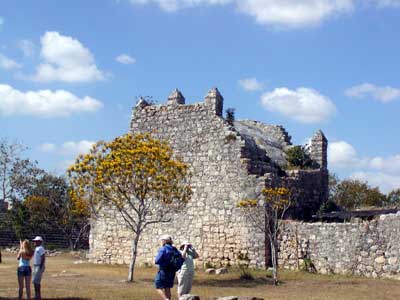
This is a church built by the Spaniards during their occupation. The stones were taken from the surrounding Mayan temples and buildings.
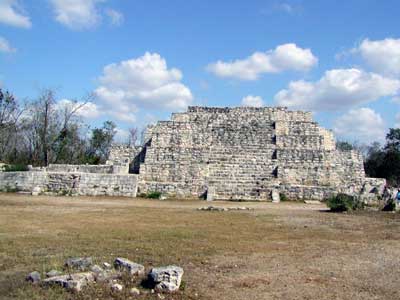
Here is a large pyramid in the Central Plaza that has been restored by Archaeologists.
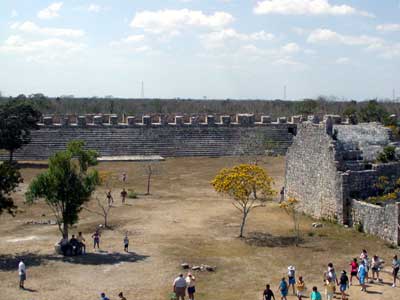
Here is a view of the Central Plaza from on top of the pyramid. The long structure in the background is part of a Ball Court structure that once stood here.
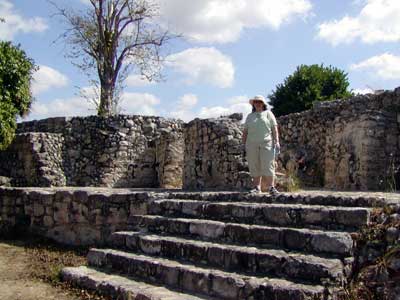
Heather and I got sick of the long winded tour guide and decided to break off on our own to explore the ruins.
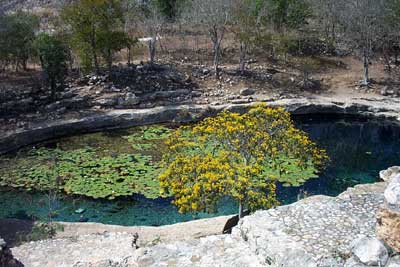
This is the Xlacah Cenote. A cenote is a sink hole caused by underground water. The Xlacah Cenote was the main water supply of Dzibilchaltun.
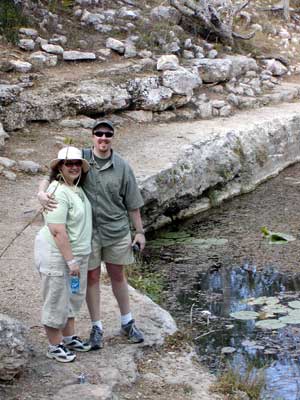
People who swim in the cenote are said to be spiritually cleansed by it's waters.
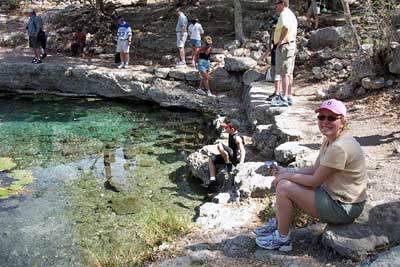
The sun was hot, and a swim in the nice cool water would have been nice, but Sue and Heather were the only one's brave enough to wade in.

Archaeologists have found fossils and Mayan ceramic shards at the bottom. It is also said that there is a species of fish that can only be found in this cenote.

While the girls waded in the cenote, I decided to wander off and explore more of the ruins on my own.

Look how perfectly straight and level these steps are.
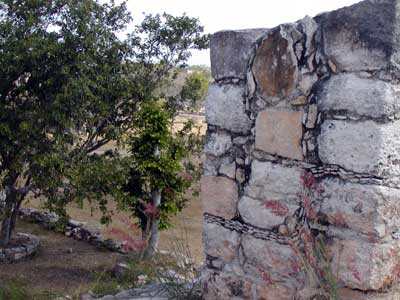
The buildings found at Dzibilchaltun were built using the "Green Masonry" method, in which the stones are held together by chocks and mortar.
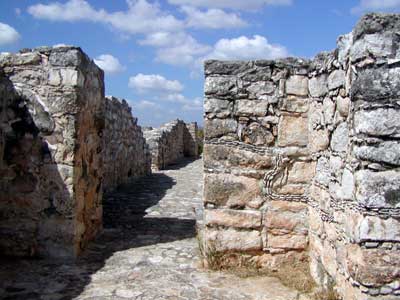
The chocks snake around larger rocks and make a very interesting effect.
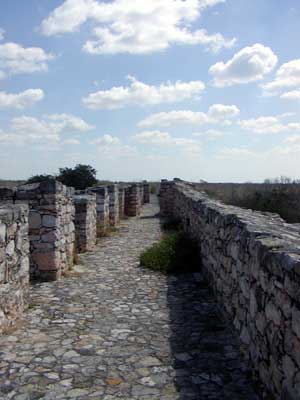
The views from atop the Ball Court structure were amazing.
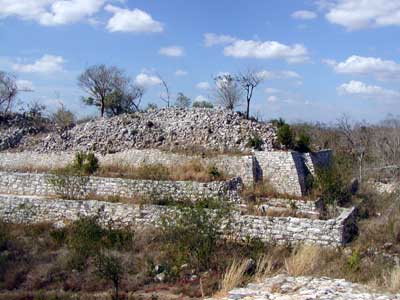
I was able to see other areas of the site that have not been fully excavated or restored.
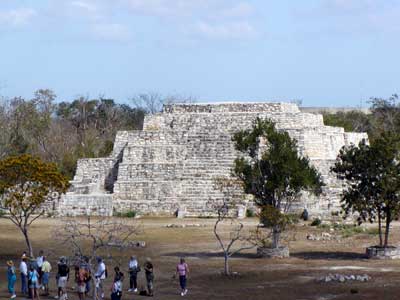
Here is another view across the Central Plaza towards the pyramid.

Pieced of brick were inlaid into this stone by Spaniards to form a cross.
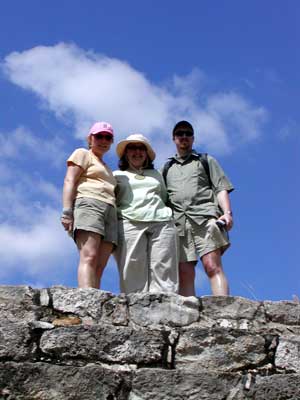
Sue, Heather and Adam stop to pose on top of another temple.
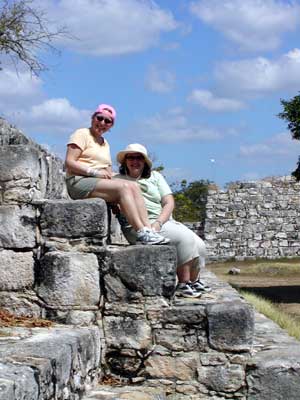
Sue and Heather take a break.

Here is the view as I climb the steps of the pyramid.
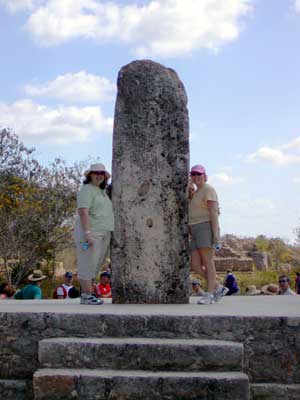
Heather and Sue pose by a large stele located in front of the Temple of the Seven Dolls.
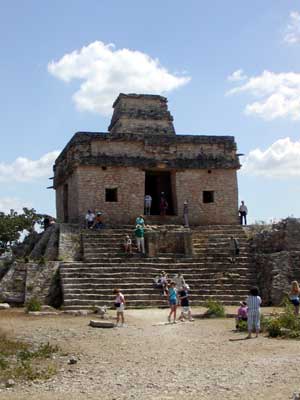
The temple got its name from seven ceremonial dolls that were found on and around the alter at its center.
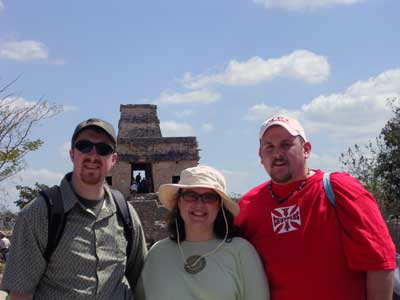
Adam, Heather and I, in front of the temple.

Sue and I sitting on the temple stairs.
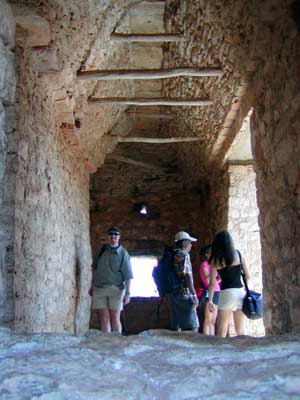
Here is a view inside the temple through one of its windows.
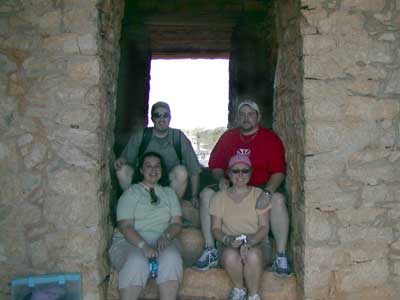
And here we are sitting in the altar room at the center of the temple.
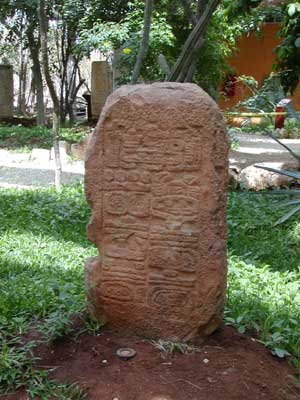
On the way out, there was a small museum displaying artifacts found in the ruins.
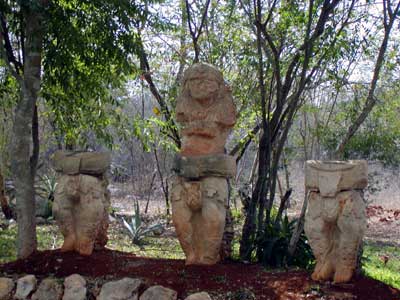
Here are three statues that represented the Mayan Ball Players.
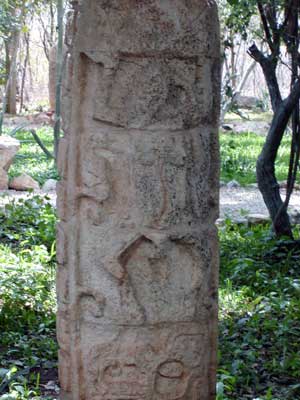
This stele depicts a frog-like God creature that is holding up the Mayan world.

This stele is a carving of a Mayan monarch.
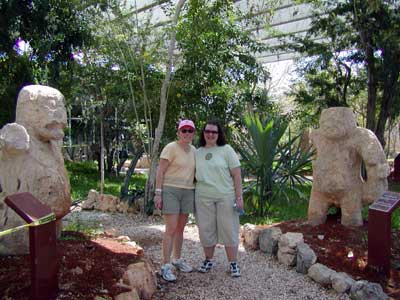
Heather and Sue are standing between statues depicting the Mayan version of Adam and Eve.
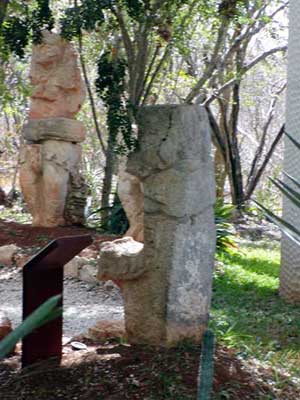
This stone is a broken scoring ring from the Mayan Ball Court.
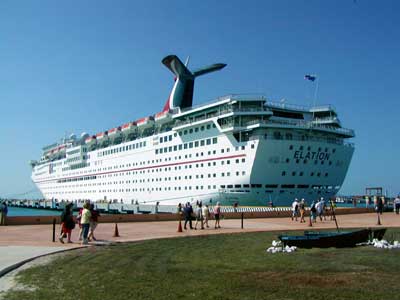
Here is our ship. It is docked at the end of a pier that stretches 5 miles into the ocean, the longest in North America.
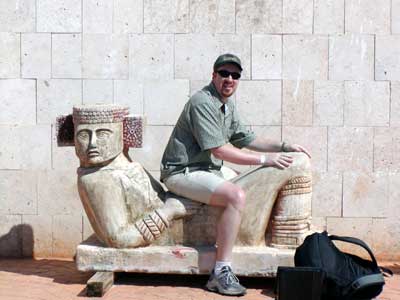
This figure is a Chac Mool. It was considered 'the messenger to the gods' and a receptacle he held served to receive the Mayan offerings.
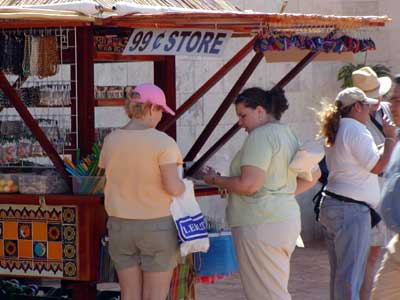
Heather and Sue take an opportunity to do a little shopping at a Mexican dollar store.
Last Updated: 3/3/05